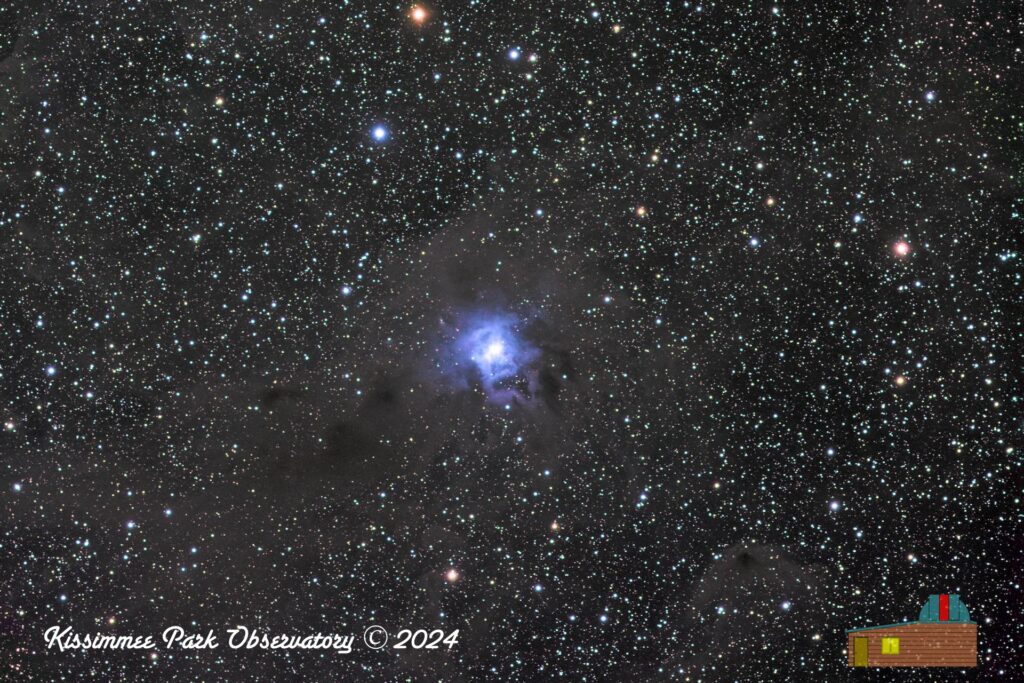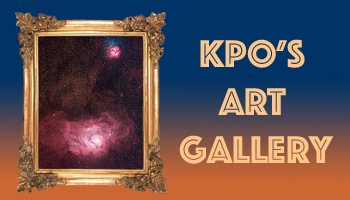
The Iris Nebula (NGC 7023) as captured by the WFAC from Bortle 1 and 2 skies. LRGB image with a total integration time of 3.5 hours.
The Iris Nebula: A Cosmic Tapestry of Beauty and Mystery
Located in the constellation Cepheus, approximately 4,000 light-years away from Earth, lies the breathtaking Iris Nebula (NGC 7023). This cosmic tapestry is a young, open cluster surrounded by an emission nebula, captivating astronomers and astrophotographers with its ethereal beauty and intricate structure. In this blog post, we will delve into the mysteries of the Iris Nebula, exploring its formation, characteristics, and significance in our understanding of the cosmos.
Discovery and Exploration
NGC 7023 was first recorded by William Herschel on September 29, 1794. The nebula remained a subject of intrigue for astronomers throughout history, with Charles Messier cataloging it as an object worth noting due to its appearance on the sky. Over time, researchers have continued to study this celestial wonder, unraveling its secrets and revealing its fascinating features.
The Nebula’s Structure
The Iris Nebula is a diffuse nebula, characterized by its delicate, wispy tendrils of glowing gas. The nebula appears blue-green in color due to the presence of ionized hydrogen (HII) and other elements such as oxygen and sulfur. These gases emit light when excited by high-energy radiation from nearby stars, particularly the O-type star 18 Cephei.
The nebula’s most striking feature is its distinctive “iris-like” structure, with swirling patterns of gas and dust resembling the delicate petals of a flower. This intricate design is thought to be the result of stellar winds and radiation from young, hot stars within the open cluster, which have shaped the surrounding nebula over time.
The Open Cluster
At the heart of the Iris Nebula lies an open star cluster, containing approximately 15-20 stars in various stages of evolution. These stars are thought to be around 2-3 million years old and are closely associated with the nebula’s formation. The cluster is dominated by the blue-white hue of O-type stars, which emit intense radiation that ionizes the surrounding gases.
The Dark Nebula
Dark nebulas are regions where dust and gas obscure the view of stars behind them, creating a silhouette against the background light. In the case of NGC 7023, a dark nebula can be found nearby, shrouded in darkness and mystery. This dark region is thought to be part of the larger complex of interstellar clouds that gives rise to new star formation.
Significance in Astronomy
The Iris Nebula serves as an important object of study for astronomers due to its unique characteristics and location within the constellation Cepheus. Researchers use this nebula to better understand the process of star formation, stellar evolution, and the intricate interplay between stars and their surrounding environment. Additionally, the Iris Nebula provides valuable insights into the properties of diffuse nebulae and their role in shaping the cosmos.
Conclusion
The Iris Nebula (NGC 7023) is a cosmic masterpiece that continues to captivate astronomers and astrophotographers alike. Its delicate structure, vibrant colors, and intricate details offer a glimpse into the remarkable processes at work within our universe. As we continue to study this celestial wonder, we are reminded of the incredible mysteries still waiting to be uncovered in the vast expanse of space.
Tap on the image to view a larger version you can explore.
This astrophoto was captured at Arches National Park and also at Capitol Reef National Park, both in Utah. These very dark Bortle 2 and 3 observing sites made a huge difference in this image capture. My previous attempt at this object was shot in early 2023 from Key West FL (Bortle 5) and the integrated exposure was over 7 hours. I captured substantially more signal, especially in the dark nebulae, with only 3.5 hours in Bortle 1-2.
Image Info
- Imaged from two locations: Arches National Park (Bortle 3) and Capitol Reef National Park (Bortle 2)
- Camera : ZWO ASI1600MM Pro
- Scope: Askar 400 Quintuplet Astrograph f/5.6
- Mount: iOptron Smart-EQ Pro
- Luminance: 18 subframes of 300s = 90 min integration
- Red: 5 subframes of 300s = 30 min integration
- Green: 8 subframes of 300s = 40 min integration
- Blue: 10 subframes of 300s = 50 min integration
- Total integration time: 210 min = 3.5 hours.
- Captured via ASIAir Pro automation
- Optical tracking via ASIAir automation via the ASI120MM-S guide camera
- Separate channels stacked and LRGB integrated in Astro Pixel Processor
- Image run through Super DeNoising
- Final processing in Aperture
Buy this image as a print or framed art piece in our Art Gallery.

